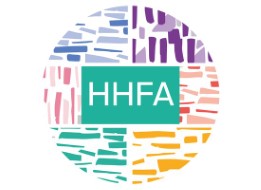Engaging the private sector to deliver COVID-19 tools and achieve Health for All
During health emergencies, governments needs to mobilize all resources – both public and private – to accelerate the implementation of national response efforts. At the same time, they are called to ensure the private health sector’s actions are aligned to core principles of Universal Health Coverage (UHC) and are directed towards the achievement of national health goals. This course defines key concepts and presents a range of tools and proven approaches to enable Ministries of Health to harness private sector capacity to achieve key policy goals, ensuring equitable access to COVID-19 tools while advancing Health for All.
Please note: These materials were launched on 27/01/2022.
Photo credits: D. Wegewijs
This course is also available in the following languages :
Français- العربية – فارسی – Español- Português – Русский
What you’ll learn
Identify the scale of the private health sector in your country, and the elements of it that are most relevant to the delivery of COVID-19 tools
Map and define private sector actors that are relevant to a particular health problem
Describe key concepts related to the private health sector, and the governance behaviours required for effective stewardship of “mixed” health systems
Explain the critical challenges, benefits and risks of private sector engagement, and how to optimise engagement to achieve policy goals
Define the range of tools used to shape the scope, activities and behaviours of the private health sector in alignment with policy goals, understand the contexts in which they work best, and their mechanisms of effect.
Course contents
Module 1: What is the private health sector, and why does it matter?:
By the end of this module, learners will describe the private health sector, its breadth and scope, and explain its relevance for national health policies.
Module 2: Why do policy makers need to engage the private health sector?:
By the end of this module, learners will explain the benefits for policymakers to engage the private health sector, describe how governments can leverage the private sector, and how different strategies can be pursued to achieve nationally-defined health goals.
Module 3: What are the key behaviours for governance of a mixed health system?:
By the end of this module, learners will list the six key governance behaviours that enable the private health sector to contribute effectively to important health policy objectives, including fighting COVID-19 and striving to achieve Health for All.
Module 4: What is public-private dialogue and its best practices?:
By the end of this module, learners will define what public-private dialogue (PPD) “looks like” in a health policy setting, explain the challenges, benefits, and risks of the process, and describe good practices that make PPD effective.
Module 5: How to facilitate an effective public-private dialogue process?:
By the end of this module, learners will describe how to implement a PPD process based on a proven six-step process, explain implementation tips based on field experience, and describe the skills and competencies required to facilitate a successful dialogue process.
Module 6: How to contract the private sector during an emergency?:
By the end of this module, learners will describe what contracting is in healthcare, explain the challenges and risks in contracting during an emergency, and outline how these can be prevented or mitigated in practice.
Module 7: How to landscape the private sector to identify relevant private groups to rollout COVID-19 vaccines?:
By the end of this module, learners will describe the purpose, design, and implementation of a landscaping exercise
Module 8: How to deploy the tools of governments to harness the private sector to deliver COVID-19 services?:
By the end of this module, learners will describe how specific policy tools can be, and are, used to create constraints and incentives for the private health sector to operate in accordance with key health policy objectives, including fighting COVID-19 and building towards Health for All.
Module 9: How have governments engage the private sector to deliver COVID-19 tools? Lessons from the Eastern Mediterranean Region:
By the end of this module, learners will provide a practical example of how some of the discussed tools can address many of the challenges faced by LMICs in engaging the private sector. Through showcasing examples from the Eastern Mediterranean – the WHO Region with the highest utilization of private sector services – you will be able to see how the tools can be relevant to different health systems
User Reviews
Be the first to review “Engaging the private sector to deliver COVID-19 tools and achieve Health for All”
You must be logged in to post a review.







There are no reviews yet.